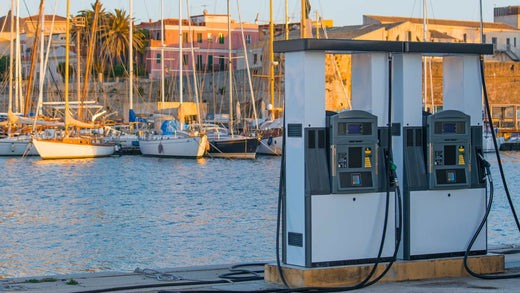
How to Safely Fuel Your Boat: Essential Safety Precautions for Boaters
Nicholas HeislerShare
Fueling your boat is a routine task, but it requires careful attention to safety. Whether you're filling up at the marina or transporting fuel to your vessel, taking the proper precautions ensures a safe and smooth process. Here's a guide on how to safely fuel your boat, plus tips for fueling different types and sizes of boats.
Safety Precautions to Follow When Fueling Your Boat
Before diving into specific fueling methods for different boat sizes, it's crucial to understand the safety precautions that apply universally to all vessels. Here are the most important steps:
1. Turn Off Engines and Electrical Equipment
Before fueling, always turn off the engine, electrical equipment, and anything that could create a spark (like radios or generators). This minimizes the risk of an accidental ignition of fuel vapors.
2. Avoid Open Flames
Ensure that all smoking materials, including lighters and matches, are extinguished. Open flames should be avoided completely in the fueling area.
3. Close All Openings
Close all hatches, ports, and windows before fueling to prevent fuel vapors from entering the cabin. Gasoline vapors are heavier than air and can collect in low areas, creating a fire hazard.
4. Ground the Fuel Nozzle
When using a fuel pump, make sure to keep the nozzle in constant contact with the fill pipe to prevent static electricity, which can ignite fuel vapors.
5. Use a Fuel Collar or Vent Whistle
Use a fuel collar around the fuel nozzle to catch spills and prevent fuel from entering the water. A vent whistle can help alert you when the tank is nearly full, preventing overfilling.
6. Avoid Overfilling
Leave about 10% of the fuel tank empty to allow for expansion. Overfilling can lead to spills, which not only waste fuel but also harm the environment and create safety hazards.
7. Clean Up Spills Immediately
If any fuel spills, use absorbent materials (like oil absorbent pads) to clean it up right away. Never hose spilled fuel into the water, as it can cause pollution and hefty fines.
8. Ventilate the Boat After Fueling
After filling the tank, open the hatches and ventilate the boat for at least 4 minutes. Check the bilge for fuel vapors using your nose or a marine vapor detector before starting the engine again.
How to Fuel Different Size Boats
Depending on the size of your boat and where it's located (on a trailer or in the water), the fueling process can vary. Here's what you need to know:
1. Fueling Small Boats on Trailers
For small boats that are typically trailered, fueling is often done at a standard gas station. Follow these steps for safe fueling:
- Ensure the boat is securely on the trailer and the engine is turned off.
- Use a portable fuel container, ensuring it is properly grounded, or fuel directly from the gas pump.
- After fueling, check for leaks, especially around the engine and fuel lines.
2. Fueling Boats at a Marina
Most mid-size boats are fueled directly at a marina dockside fuel station:
- Secure your boat to the dock and turn off all engines and electrical systems.
- Have passengers disembark while fueling to minimize risks.
- Keep the fuel nozzle in contact with the fuel pipe and listen for the whistle or pay attention to the fuel gauge to avoid spills.
- After fueling, ventilate the engine compartment and cabin before restarting the engine.
3. Fueling Large Vessels with In-Water Refueling Services
For larger boats or yachts, in-water refueling services are sometimes available:
- Professional staff usually handle the refueling process, but it's still important to follow safety protocols like turning off engines and ensuring proper ventilation.
- Large fuel tanks may take longer to fill, so be patient and remain vigilant about spills or leaks.
Important Environmental Considerations
Spilled fuel can severely harm aquatic life and disrupt ecosystems. Always fuel your boat responsibly to protect the water and the environment around you:
- Use fuel collars to prevent drips into the water.
- Never overfill your tank.
- Report significant fuel spills to the marina or the U.S. Coast Guard immediately.
Final Thoughts
Fueling your boat safely is essential to protecting not only yourself and your passengers but also the environment. By following these simple safety precautions, you can ensure that each refueling session is safe and efficient. Whether you're fueling a small boat on a trailer or refueling a large yacht at the marina, taking the time to prepare properly can make all the difference.
Related Posts You May be Interested in:
When it comes to keeping your boat clean, look to Captains Preferred Products' boat cleaners and chemicals. Find everything you need to keep your vessel squeaky clean all season - always at the best prices.




